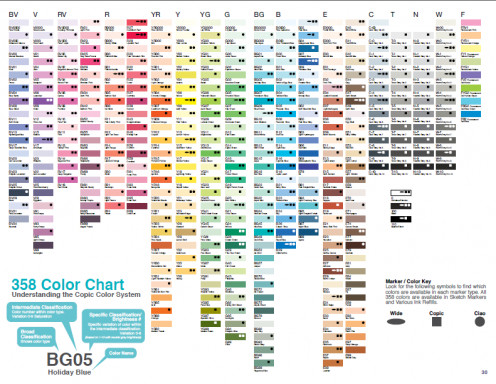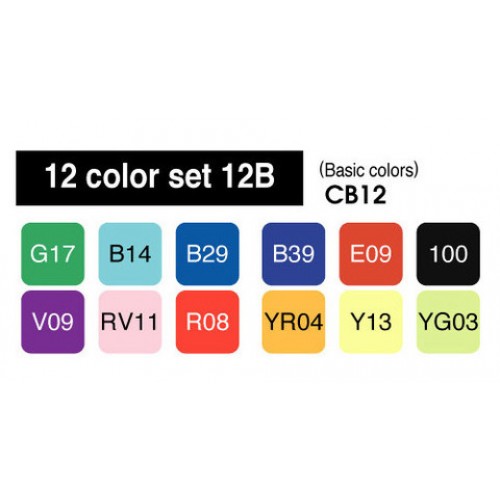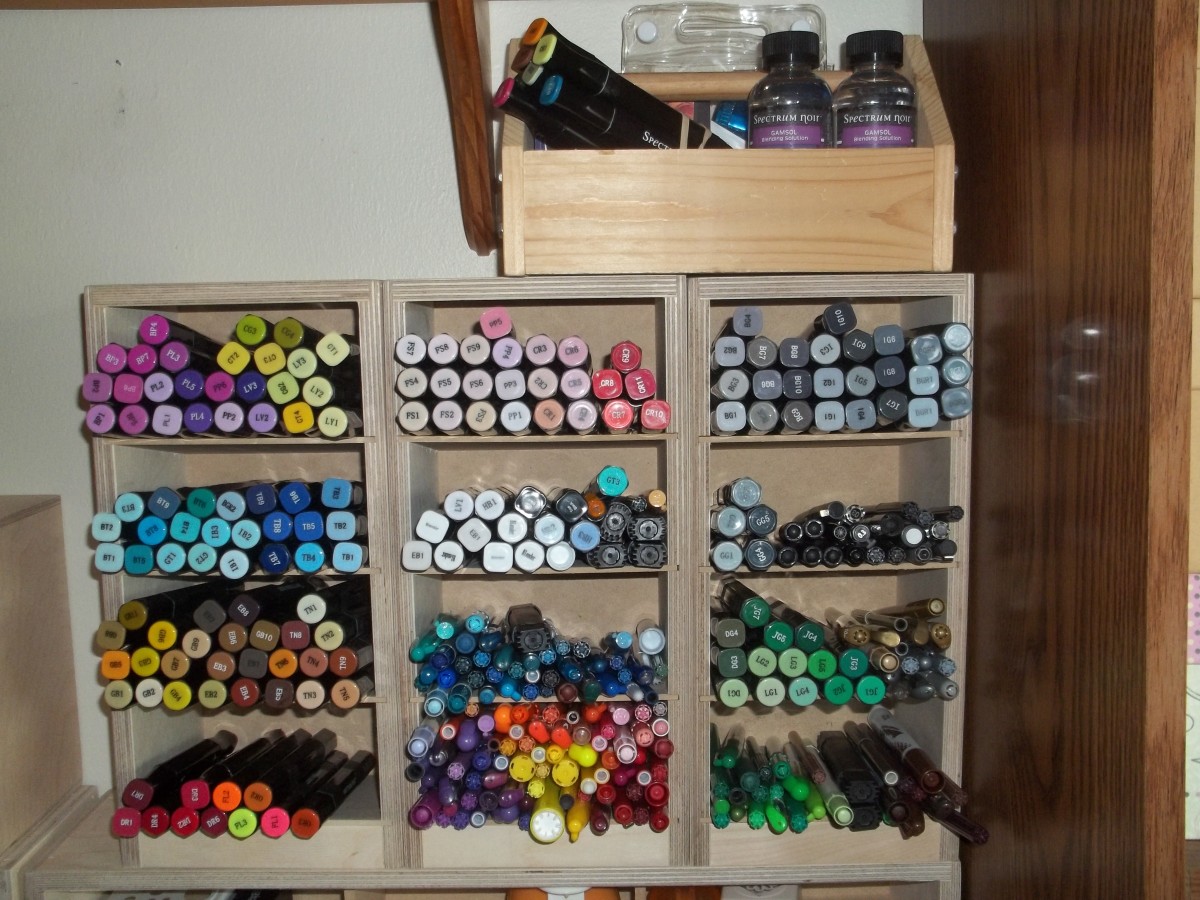The Copic Numbering System
Color Chart


Created in 1987, COPIC markers instantly became the leading professional markers in the world, a status that many feel they maintain to this day. The alcohol-based, refillable markers with replaceable tips are the industry standard. The high quality inks along with the rigorous manufacturing standards keep COPIC markers in high demand around the world.
For professionals, COPIC markers are definitely a must since the number of uses they have for creating beautiful designs and color schemes are almost endless. However, there is one point of confusion that some people have commented over the years is that the COPIC numbering system which identifies the particular colors of inks that are used.
The COPIC numbering system is divided into two parts, the letter representing the color and the number which indicates the shade. When combined, the system uses the letter first followed by the number, so for example the color Red in the shade of 20 would read “R20”.
The lettering system for the COPIC markers is fairly straightforward. Here are just a few examples:
- R = Red
- E = Earth
- NG = Neutral Gray
- Y = Yellow
Keeping Track of Your Copic Pens
While the lettering system provides the actual color used in the markers and is pretty straight forward - what does create a bit of confusion is the numbering system for the shades. While the numbers can range from 1 to 99, that does not represent a gradual shifting of the shades from light to dark. Instead, you have to read the numbers a little differently to fully understand how the system works.
For example, Y08 is a darker shade than Y20 however Y59 is darker than Y20. To fully comprehend the system, it is important to remember that each number represents a different factor. The first number just after the letter is the color tone and the second number is the brightness of the shade itself. Therefore, Y08 is darker than Y20 because the number “8” is greater than “0” which is at the end of the “20”.

Marker Techniques
- Techniques When Using Markers to Color Graffiti
Learn how to color graffiti with markers instead of paint. There are three main styles to graffiti; tag, blockbuster and wild. - Copic Marker Techniques
There are many more things you can do with Copic markers. These markers can be used to make cartoony drawings or extremely realistic drawings. The possibilities truly are endless
It is very helpful that the color itself is also represented on the markers this will help you can differentiate between them more quickly than just relying on the number system. This numbering system exists so that professionals can order them in bulk without having to recheck the colors. Furthermore, this COPIC numbering system provides a short, easy way to identify the different colors, tones and shades all in a simple numbering system.
With the continued popularity of COPIC markers, there is little doubt that the millions of people who use them everyday will appreciate the fine shading, texture and variety that they provide in their work. From creating commercial to personal art, COPIC markers represent the finest professional markers in the business.
This success has allowed COPIC markers to expand into the commercial market along with those who want more precise coloring, shades and texture to their work. Understanding the COPIC numbering system allows for a greater appreciation of the many different colors and shades this unique marker system provides.








